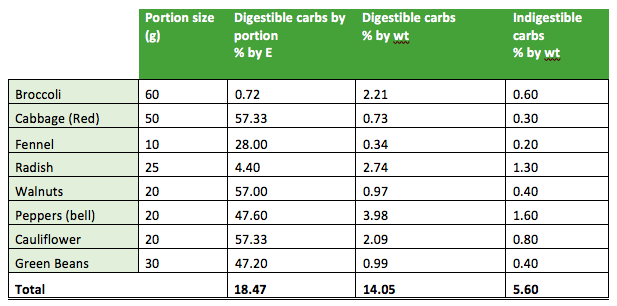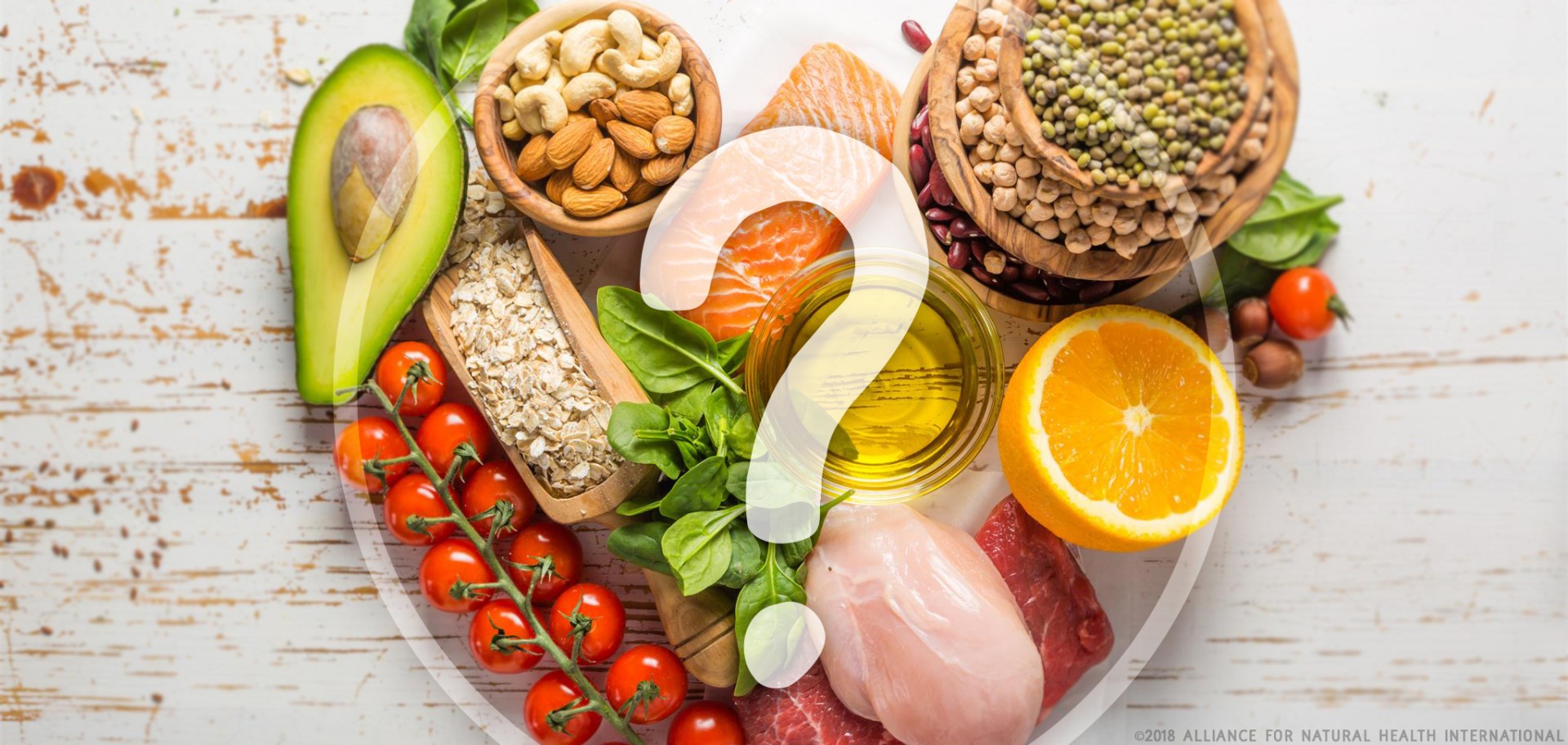Content Sections
Have you joined the low carb high fat movement (LCHF)? Are you cutting out plant foods for fear of overdoing the carbs despite a good body of evidence that suggests we need them for our long-term health and wellbeing? Fear not! We show you in this article how and why you can enjoy both the benefits of LCHF and a plant-based diet.
Healthy intakes of fibre have long been linked with many health benefits including a lower risk of heart disease, diabetes, obesity and bowel disease. Governments around the world typically recommend adults eat around 25-30g of fibre per day (UK, US, Australia) but many people fail to come close to recommended levels. Only this week, the UK’s Public Health England has issued a stark warning about people’s heart health urging them to find out their heart age and take steps, including eating more fibre, to reduce their risk.
It’s the form that matters
Unlike other carbohydrates, fibre can’t be broken down by our digestive systems. But it can be by our gut bacteria. Put simply, if we don’t eat enough fibre, some of the bacteria in our gut starves and dies while others grow stronger by changing their diet to feast on the mucus lining of the gut that keeps our gut wall healthy. Our gut mucosa is also the most dynamic and probably important immunological environment of our body. It’s the key interface of our immune system between the inside and the outside world, and is vital to our ability to discern friends from foes, be they chemicals or organisms. Living in the mucus layer of the intestine is a ‘good’ bacteria called Akkermansia muciniphila. Recent research suggests it’s one of the most important bacterial species in our gut. Among it’s key functions is the cleaning function it has on our mucosa, a process that generally occurs overnight, in the absence of any food. If you don’t consume sufficient fibre by day, you deprive Akkermansia and other beneficial species and you promote mucus-degrading bacteria and increase the risk of gut-based diseases. In the process, you’ve also handicapped your immune system, your first line of attack against pathogens. Fancy throwing antibiotics into that mix as well?
Damage to our gut environment can result in the onset of bowel issues such as inflammatory bowel disease (IBD), irritable bowel syndrome (IBS) and leaky gut leading to inflammation, a precursor to the development of chronic and auto-immune diseases.
There are of course ways of helping maintain the health of your microbiome, whilst adhering to a LCHF regime. One of these involves making sure you provide sufficient fibre and polyphenols from plant foods.

Splitting fibres
Fibre is generally classified into two types; soluble and insoluble.
Soluble fibre is water soluble. It dissolves in water to form a viscous gel that can then be fermented by our gut bacteria to produce short chain fatty acids (SCFAs). SCFAs help to regulate cholesterol production, improve insulin sensitivity, aid weight loss and maintenance of a healthy body weight as well as lowering the risk of type 2 diabetes by reducing pro-inflammatory cytokines and strengthening immune function.
Insoluble fibre isn’t water soluble. It adds bulk to stools to allow them to pass through the gut more quickly thereby reducing the amount of time toxins spend in the gut. Although, many of the foods we’re routinely recommended to eat can cause more harm than good.
Fibre or not?
For some people however, less is more! In their quest to include more fibre in their diet many people have been seduced by Big Food’s call to swop highly processed carbohydrate-based foods, such as white bread, pasta and rice for highly processed wholegrains in an effort to improve health.
The reality of this advice is a combination of a diet that’s still high in one of the most common mediators of intolerance in the diet, gluten, as well as one very high in carbohydrates derived from ultra-processed grains. This combination can create a perfect storm leading to a plethora of health problems, ranging from the onset of auto-immune disease, to the acceleration of neurodegenerative conditions like Alzheimer’s disease.
We’ve also got doctors out there recommending people replace fibre containing foods with ultra-processed white foods. The very foods that we’ve been advised to avoid! Whilst this may alleviate problems in the short-term, it is unlikely to get to the root of the problem in the long-term.
Not only have we seen a dramatic rise in interest in LCHF diets, there is also a growing interest in zero carb diets (also referred to as the ‘carnivore diet’). Adherents of this diet eat only animal foods and eschew plant foods completely. Indigenous cultures such as the Masai are often cited as the basis for this type of diet, however there is evidence that the Masai traditionally did not avoid plant foods entirely, using them both as a source of nutrients and medicinally.

Those adopting a ‘meat only’ diet report, what some consider to be miraculous recoveries from the health issues that have plagued them. This is not as far-fetched as it might sound. By taking plant foods out of the equation, short-term, you reduce the ‘noise’ caused by plant phytochemicals and fibres, giving the gut time to calm down, heal itself and learn again to better differentiate between 'friend' and 'foe'. You also have a straightforward and effective way of eliminating your body's dependence on carbohydrates for energy, and force it to start beta-oxidising fatty acids for energy instead.
A word of caution, however. The long-term health effects of a zero-carb diet in humans are not yet known. Many would also contest the environmental sustainability of very high levels of reliance on animal foods. The corollary is also true: there is copious evidence that plant-based diets, including ones that still include some meat or fish from quality sources, have the best long-term outcomes for not just our health and longevity, but the health of our microbiota.
Regardless of your preference we recommend getting your fibre from vegetables in particular and in lesser quantities from fruit. Consistent with the need to ensure a broad diversity of plants in your diet, you can choose a wide range of different plants that together help you meet your daily fibre quotient. Check out Table 1 below in which we’ve computed, using raw data from the USDA National Food Composition Databases, the amounts of digestible carbs and fibre in a wide range of foods.
Table 1: Macro-nutritional composition of various plant foods, by energy and by weight (raw data source: USDA Food Composition Databases).
And here’s our big take-home point: For those choosing to follow an LCHF diet, you don’t need to junk plant foods. It’s still very feasible to benefit from a wide variety of plant foods assuming your body can handle them and hasn’t succumbed to auto-immune related issues and can still sort out what’s good for it and what’s bad.
The example below (Table 2) shows just how easy it is to incorporate a range of vegetables suitable for a low carb diet to ensure the health of our gut microbiota.
Table 2. Carbohydrate composition of 8 plant foods

Even before you’ve included any meat and fats that you care to add to the mix, you can see the carbohydrate contribution by energy is less than 20%. With added fats (and meat or fish), it would be quite easy to bring the carb contribution to as low as 5% if this was required, the typical goal in classic ketogenic diets used to control epilepsy and treat brain tumours.
Keeping your gut bacteria happy ㋡
So, here are some simple steps you can take to keep low levels of carbs in your diet. Even if you don’t love them, spare a thought for the bugs in your gut who can’t live without them!
- Adults should aim to include 30g of fibre per day in their diet from various plant sources
- Aim to eat four or more portions of raw or lightly cooked above-ground vegetables, with minimal fruit, a day as recommended by the ANH Food4Health guidelines
- Avoid starchy (root) vegetables if you want to keep your carb levels low
- If you’re adding more fibre to your diet increase your intake of vegetables slowly to reduce the possibility of experiencing problems such as bloating and cramping
- Because soluble fibre dissolves in water ensure you drink enough water
- Legumes are a good source of fibre, but they also contain lectins, which are part of a plant’s defence mechanism. Because they are resistant to digestion they can disrupt the uptake of certain nutrients, damage the lining of our gut and create an immune response. If you include legumes in your diet ensure you cook them properly to deactivate the lectins
- Eat as wide a diversity of plant foods as possible
- ‘Eat a rainbow’ including all 6 phytonutrient colour groups every day
- Add fresh herbs and spices as often as possible or choose good quality non-irradiated dried versions to flavour your foods. Try out different home-made herb sauces and salsas to add interest and zest.
- Consume herbal teas that provide you a calorie-free source of phytonutrients needed to help balance countless metabolic and physiological processes in the body – as well as facilitating detoxification along with microbiome and immune health
- Incorporate vegetables into all your meals including breakfast. Useful additions include avocado, watercress or rocket. For those who can tolerate solanaceous veg/fruits, tomatoes and peppers can be added – while others may wish to consume mushrooms (fungi)
- Stick to whole unprocessed foods and don’t be fooled by promises of ‘fibre rich’ ultra-processed foods with a laundry list of ingredients. You never know what may be lurking inside!
- Fresh, organic, seasonal produce is best, but some frozen veggies and fruits can make useful standbys
- Experiment with fermented foods such as kimchi, sauerkraut or kombucha – your gut bugs will thank you for it. If you’re not ready to experiment and make your own, watch out for products that are pasteurised or have vinegar in as they won’t contain the beneficial bacteria
- Don’t forget to add healthy fats to your veggies to enhance nutrient absorption and slow down their digestion
For more information:









Comments
your voice counts
05 September 2018 at 7:41 pm
I simply add a tablespoon of raw rolled oats into my breakfast mix drink. 100% guaranteed and needing no maths.
05 September 2018 at 9:05 pm
Can you comment on the contents of the books Waist Disposal, and Escape the Diet Trap, by John Briffa. Using his suggestions (and homeopathy) I am now an ex-diabetic.
What do you think of HiLo which is a highly processed low carb bread (15%) with seeds and processed soya?
thank you
06 September 2018 at 10:27 pm
Some of us can’t eat foods that affect our thyroid or histamine levels. I am gluten intolerant.
10 September 2018 at 11:49 am
Hi Annette. That's why a one size fits all approach doesn't work. Whilst we recommend a low carb, high fat approach within our guidelines you can tailor the foods you include to meet your particular needs. As someone who is gluten intolerant you may find this recent article of interest, if you've not read it already - https://anhinternational.org/2018/06/06/gluten-trigger-autoimmune-disease/
Warm Regards
Melissa
07 September 2018 at 10:55 am
Very interesting article, I do most of it already, but will try to implement even more!
10 September 2018 at 8:05 am
Gosh did not know that some bacteria turn on the mucosa for food in the absence of fibre very interesting.
19 September 2018 at 8:23 pm
do organic wheat crackers or organic sour dough or rye bread fit into a good diet? I enjoy them along with vegetables, salads, little juice, some fruit, tea, water and cod liver oil, organic dressings, avocados, cod liver oil, non-grain and bean, plantain, etc. chips, six ounces of animal meat a day
17 March 2020 at 7:22 pm
Very helpful! Wondering who the author is ???
17 March 2020 at 9:23 pm
Hi Drew, it's great to hear you found the article helpful, thannk you. The article was put together by the ANH Team.
26 April 2024 at 12:50 am
Add more fruits and the few veggies that are low carb to your diet for the fiber.
21 June 2024 at 8:08 pm
And yet some of us thrive on a low fibre diet. High fibre brings bloating, stomach aches and terrible constipation all symptoms which ended up in a hernia. So I have experimented cautiously over 5 years and always find for me it is low fibre for a healthy gut
Your voice counts
We welcome your comments and are very interested in your point of view, but we ask that you keep them relevant to the article, that they be civil and without commercial links. All comments are moderated prior to being published. We reserve the right to edit or not publish comments that we consider abusive or offensive.
There is extra content here from a third party provider. You will be unable to see this content unless you agree to allow Content Cookies. Cookie Preferences